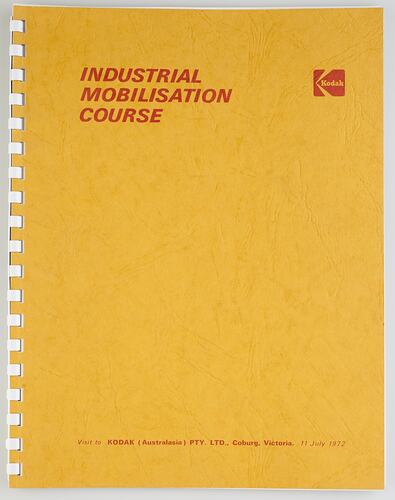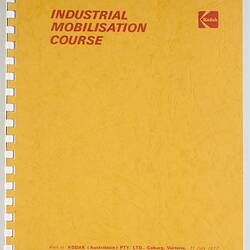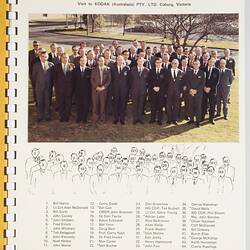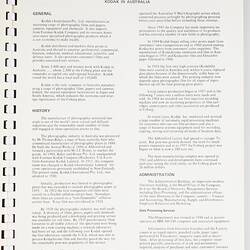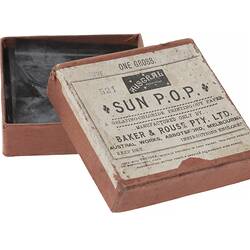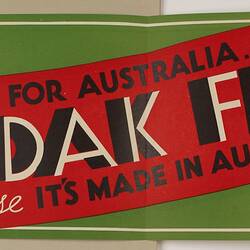Summary
Booklet issued by Kodak Australasia Pty Ltd, for attendees of Kodak's Industrial Mobilisation Course held at Kodak's Coburg factory on 11 July 1972.
This booklet outlines applications of the photographic industry for the Defence Force and how military mobilisation would affect Kodak's manufacturing practices. It details the history of Kodak, and outlines its current (as of January 1971) administration and manufacturing processes, using colour photographs to illustrate the various activities and sites at the Coburg factory.
The booklet features a photograph of 44 attendees with their names and a key. Attendees of this particular course were all male, and included both Kodak staff and external visitors, including military personnel. The donor of this booklet, Neil Bucher, a Kodak staff member, attended this mobilisation course.
In 1971, Kodak was the only company in Australia manufacturing photographic films, papers and cameras, and held great economic and strategic significance. The factory in Coburg consisted of several key departments, including Manufacturing Division - Sensitising, Finishing, Color Print and Processing; Engineering; Supply and Distribution Division; Research Laboratory; Employee Relations Division; and Marketing Division. The company employeed about 3,400 men and women, with about 2,300 based at Coburg.
Kodak manufactured and distributed a wide range of photographic products to Australasia, such as film, paper, chemicals, cameras and miscellaneous equipment. Its client base included amateur and professional photographers, as well as specialist medical, educational, defence, scientific and graphic art professionals who used photography, x-ray and other imaging techniques.
This booklet is part of the Kodak collection of products, promotional materials, photographs and working life artefacts collected from Kodak Australasia in 2005, when the Melbourne manufacturing plant at Coburg closed down.
Physical Description
17 page booklet with a yellow card cover with red printing, and white plastic comb binding. Original colour photographs are inserted in various places of the text, adhered to the pages. Pages are printed with text only on one side.
More Information
-
Collection Names
-
Collecting Areas
-
Acquisition Information
Donation from Mr Neil Bucher, Mar 2012
-
Issued By
Kodak (Australasia) Pty Ltd, Elizabeth Street, Coburg, Greater Melbourne, Victoria, Australia, 11 Jul 1972
-
Format
Photograph, Black & White
-
Inscriptions
Front cover, red ink, printed: 'INDUSTRIAL / MOBILISATION / COURSE [Kodak logo opposite] / Visit to KODAK (Australasia) PTY. LTD., Coburg, Victoria. 11 July 1972'
-
Model Name or Number
-
Brand Names
-
Classification
Manufacturing & industry, Photographic products, Promotional materials
-
Category
-
Discipline
-
Type of item
-
Overall Dimensions - Closed
218 mm (Width), 6 mm (Depth), 283 mm (Height)
-
Keywords
Photography, Manufacturing Plants, Manufacturing Workers, Training Courses, Industrial Development, Factory Visits
